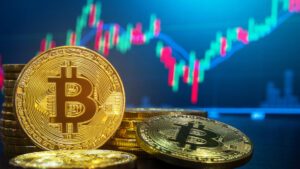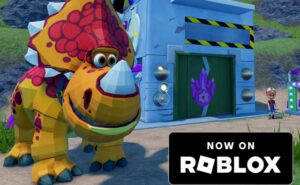A Comprehensive Guide to Non-Fungible Tokens (NFTs)
10 min read
Non-fungible tokens have recently achieved great appeal in the collectible and visual arts business. The term, which was formerly unknown to the globe, is now being acknowledged as one of the most productive investment vehicles, alongside bitcoin and other digital assets. It is to no surprise that the great majority of visual artists are being pulled persistently towards it and are eager to spend their resources into it for good.
It is not just virtual investors who are jostling for a spot in the financial markets today; known celebrities and artists are also seeking to get a cut of the profits. That makes sense, though. Why would anyone ever let go of such a powerful money-making opportunity, after all? The same can be said about NFTs.
Renowned world organizations, investors, and famous tycoons are all likewise trying to get a hold of it. In light of the fact that NFTs were sold for a total of $69 million Ether in their most recent auction, it is safe to say that NFTs are here to stay and will continue to reign for a long time. In truth, this vivid figure is just symbolizing the beginning of the NFT era.
Virtual designers such as Beeple are also stepping towards non-fungible tokens (NFTs), and using them to publish their unique pieces of art and other graphics while using the same blockchain-based technology to determine if the pricing is legitimate or not. However, it should be noted that NFTs are not limited to visual art exclusively. NFTs have other different uses, too, such as in the ownership of any exceptional or uncommon products, even when they’re in the form of some other kind of commodity. In addition to getting an electronic copy, NFTs may also have a physical expression; as a result, they are not restricted to the creation of a visual, non-existing work of art in their entirety.
This article will tell you everything you need to know about NFTs. You’d learn what they are, how do they work, and how can anyone, including yourself, can get a hold of them. Just keep reading to find answers to all the questions which are currently boggling up in your mind!
Brief Introduction to Non-Fungible Tokens (NFTs)
I am sure by now you are super familiar with the word NFT, but do you know what it really means? You’d have trouble comprehending the complicated concepts behind NFTs until you are sure what they precisely are.
NFT or Non-Fungible Token is a one-of-a-kind and non-transferable unit of data that is stored on a blockchain. Consider it as a unique form of data, which is distinct from all other units of data and, as a result, cannot be swapped for another block of data. Bitcoin, as well as other replaceable commodities, on the other hand, are examples of the opposite. You can always exchange BTC with another commodity, but you can never interchange an NFT. It can store nearly any digital information, including paintings, 3D animation, music, and other media from video games.
The assets connected with NFTs are constantly changing, and all of these assets may be verified using blockchain technology if the right conditions are met. Non-fungible tokens are useful in validating the authenticity of any digital format or item, as well as reducing the likelihood that a digital picture or asset would be copied or reproduced. Consequently, every unit is unique from others and can’t indeed be swapped. You may be feeling that you’ll be paying a substantial amount of money on nothing other than a digitized replica of an image, but this isn’t really the case. Let me explain!
Consider NFT being a work of art in its own right. You may really buy artwork straight from an artist while he or she is in the process of making it, thereby becoming a proprietor of that piece of artwork. It doesn’t matter if you didn’t build the piece of art; you also have the right to use it in whichever manner you see proper. It’s almost similar to it, the only difference being that it is electrical rather than solid. Conventional paintings may be seen as random patches of color on a canvas if NFT is taken to be nothing but a PNG file. The creator’s and the media’s perspectives on a piece of art determine its monetary value, after all.
Beyond the arts, there seem to be a number of additional NFT uses across a wide range of industries. But please keep in mind that, unlike cryptocurrencies, non-fungible tokens are not interchangeable, which makes them a different kind of venture. Every NFT is distinct from the others, and each would have a distinct value and pricing system. So, in order to acquire and sell NFTs, you should have some form of media associated with them in order for their value to rise over time.
NFTs, in the opinion of their supporters, are the future of capitalism. In the future, they predict that this method will be used for tokenizing ownership status for various types of property, including anything from concert tickets to mansions. For artists, non-fungible tokens (NFTs) might provide a solution to the challenge of how to commercialize digital artworks. As a result, they may earn more money from NFTs since they can earn a fee for each occasion the NFT facilitates trade after it is first purchased. NFTs, according to their advocates, have the potential to change other industries such as music, athletics, and entertainment.
Importance of Non-Fungible Tokens
In comparison to the relatively basic notion of digital currencies, non-fungible tokens represent a significant advancement. Modern finance systems are comprised of complex trading and financing systems for a wide range of asset kinds, spanning from property investment to lending agreements to artwork, among other things. By making it possible to create visual representations of tangible assets, NFTs offer a significant step forward in the reformation of this conventional ecosystem.
The effectiveness of the market may be the most evident advantage of NFTs. A physical item that is converted into a digital asset accelerates operations and eliminates the need for middlemen. The use of non-fungible tokens (NFTs) to represent physical or virtual artwork on a platform eliminates middle agents and enables artists to communicate firsthand with their fans.
NFTs also aid in increasing the efficiency of corporate operations. Consider the NFT of a champagne bottle as an example. Meanwhile, helping to trace down where the bottle came from, NFT would also help to keep track of how much it was sold throughout the whole production and distribution process.
Non-fungible credentials are also good for use in the context of identity management. Consider the example of actual passports, which must be shown at every point of entrance and departure at the airport. When individuals’ passports are converted into NFTs, each with its unique credentials, it will become possible to simplify authorities’ entrance and departure procedures throughout the world. Furthermore, NFTs may also be utilized for identity management in the digital environment. Since they are one-of-a-kind, they can act as great identity markers for an individual.
In addition, NFTs may diversify investments by fractionalizing tangible assets such as real estate. It is far simpler to split an electronic real-estate-based asset between numerous owners than to divide a conventional real estate investment among many proprietors.
This tokenization ethic does not have to be limited to real estate; this can be applied to other types of assets as well, such as artworks. As a result, artwork does not necessarily have to be owned by a single individual. Multiple people may own the artwork’s digital version, each of whom is accountable for a different portion of the painting. Such partnerships have the potential to boost the company’s value and income.
The establishment of new industries and types of investment represents the most intriguing prospect for NFTs. Think of a tract of land that has been subdivided into many divisions, each one comprising a distinct set of features and various sorts of properties. One of the subdivisions may be located near a beach, whilst the other is next to a cinema or a bar, and still, another near a residential community. Each of these unique lands can be represented using an NFT that can store data regarding its distinct attributes and values. You see, NFTs can play a pivotal role in real-estate dealing too. This complicated and bureaucratic endeavor can be made more straightforward by the efficient amalgamation of NFTs.
The blockchain-based virtual reality platform Decentraland, which runs on Ethereum’s blockchain, has already incorporated this notion. As non-fungible tokens (NFTs) grow more complex and are connected into an economic structure, it could become viable to apply the same notion of tokenized parcels of land, each with a different value and placement, in the actual world.
Working of NFTs
NFTs vary from typical ERC-20 tokens, like the famous DAI or LINK, because each particular token is fully unique and cannot be split or divided among many holders. NFTs provide the capacity to transfer or take sovereignty of any one-of-a-kind digital content data that can be tracked using Ethereum’s network as a public ledger, allowing anybody to participate in the digital economy. NFTs are digital entities that may be used as a token for both digital and non-digital resources.
GIFs, videos, music, and collectibles are all examples of what an NFT might represent. Furthermore, it might be used as a representation for real-world goods such as invitations to a real-world event, legal documentation, autographs, or tokenized bills, among other possibilities. There’s a lot more to it than that, to be honest. There are a plethora of more possibilities to explore!
An NFT may only be owned by one person at a time. Ownership is handled by the use of a unique ID and information that any other token can’t replicate. These unique units are created using smart contracts that allocate property and govern the generalizability of the NFTs in circulation. When someone generates or mints an NFT, individuals are actually executing a code contained in smart contracts such as EWQ-2372 when they make the transaction. All of this information is put to the blockchain, which is the platform where the NFT is administered.
From a high-level perspective, the minting process includes the following steps:
Adding a new block to the chainConfirming and validating the accuracy of informationRecording information onto the blockchain
NFTs feature a number of unique characteristics. Let’s see some of them:
Each token that is created has a one-of-a-kind identification that is connected to a specific Ethereum address.They are not convertible with the other token on a one-to-one basis. A single ETH, for example, is exactly the same as the other ETH. This is not the case with NFTs. They are equal to none. Every unit has a unique owner, and this identification is readily verified via the use of blockchain technology.They are based on Ethereum and may be purchased and sold on any NFT market that is based on Ethereum.
Therefore, if you own an NFT, it is pretty easy for you to prove yourself as to its legal owner. You’d be given a private key that would serve as a confirmation of your authorship of the original document. However, please note that the original creator of the artifact would also have a public key, which would be the permanent feature of the token’s existence. Moreover, since it is your NFT, no one can modify or amend it in any manner. You may likewise resell it, and in certain situations, the original author will also get resale royalties from the sale. The more the sales, the more the actual owner would make.
If you don’t feel like selling your NFT for whatsoever reason, you can keep it with yourself for as long as you want. You may hang on to it indefinitely, confident in the knowledge that your asset is protected by your Ethereum wallet.
Furthermore, if you produce an NFT, you can simply show that you are the inventor. Also, don’t forget that you may earn royalties on each and every sale of your product. Last but not least, you may resell it on any NFT marketplace or on a peer-to-peer platform. You’re not tied to any one system, and you’re not reliant on anybody else to act as an intermediary.
Can You Make, Sell or Buy An NFT?
It’s possible that if you’ve read this far, you’re wondering: can I create an NFT? Technically, yes. You can. There are no restrictions when it comes to buying, selling, or even making NFTs. You may make a piece of art, have it converted into an NFT on the ledger (a process known as ‘minting,’) and then sell it on any virtual marketplace of your preference. You may also attach a royalty to the piece, which will compensate you every time anybody purchases the artwork via a resale.
In addition to serving as a secure storage area for digital assets, a crypto wallet is an integral ingredient of any shared blockchain, and as such, it has a function to play in non-financial tokens (NFTs). When purchasing NFTs, you should have an E-wallet established, and your wallet should be stocked with cryptocurrency before you can begin the whole thing.
However, hidden costs are worth being mentioned at the moment. These costs may be really expensive, with some sites demanding a ‘gas’ charge for each and every sale (the cost of the energy required to conduct the transaction), as well as a fee for both selling and purchasing. You must also account for conversion costs and price changes that occur throughout the day. The result of all of this is that the costs may frequently be far more than the amount you’d receive by selling the NFT.
NFTs, like cryptocurrencies, are, on the other hand, highly unregulated. A non-fungible token (NFT) may be created and sold by anybody, and its value is not guaranteed. If the buzz fades down, it is possible for losses to amass. Deception and frauds are also a possibility in a marketplace where many players use pseudonyms to avoid being identified.
Whether or if NFTs are here to remain, for the time being, they are generating income for certain individuals and opening up new opportunities for digital creativity. To be on the safe side, exercising caution and thoughtful deliberation when deciding which platforms to utilize is highly recommended.
Conclusion
Non-fungible Tokens are getting really powerful, known, and easily obtainable these days. It offers a novel mechanism for users to sell their virtual belongings and art pieces online while keeping their legality intact. Even if it is a completely new outlook in the virtual industry, we can predict that these will be around for a very long time because of their fantastic appeal.






